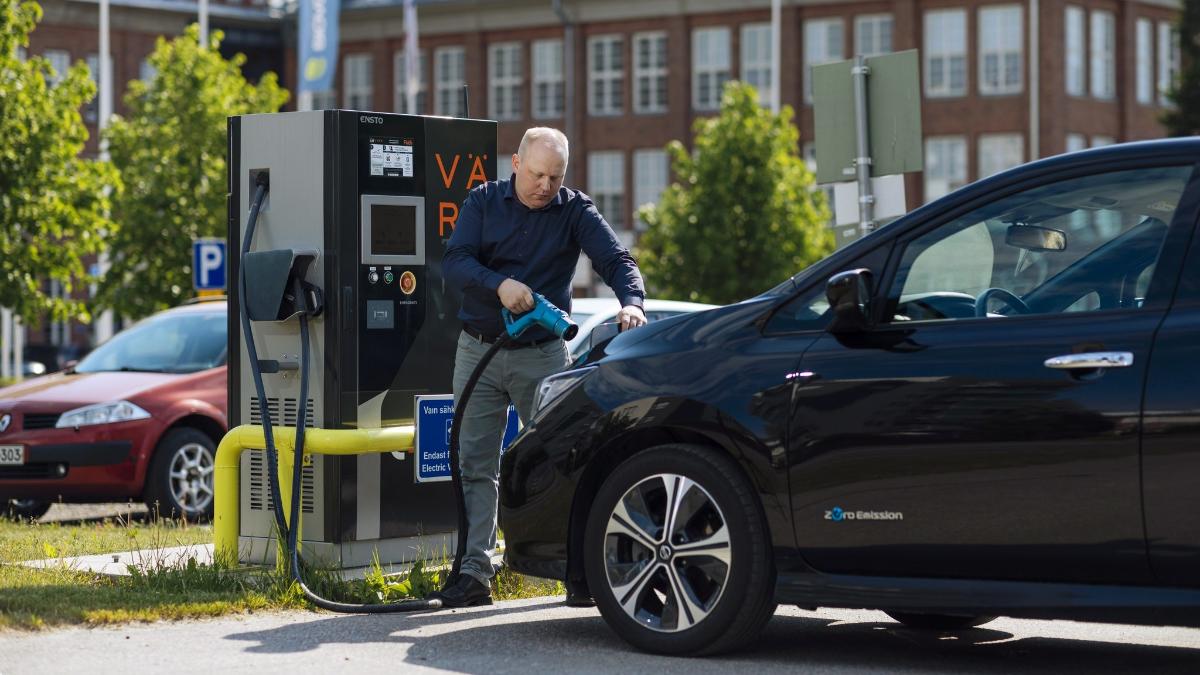Distribution infrastructure programme helps transition to alternative fuels

On 13 November 2024, the Ministry of Transport and Communications published the national programme on the distribution infrastructure for alternative fuels. The programme, which was drawn up in broad-based cooperation with stakeholders, facilitates the implementation of EU regulation.
The programme includes an updated assessment of how the distribution infrastructure and the market of alternative fuels in road, rail, maritime and air traffic have been developing. The programme sets objectives and presents measures to achieve them.
Improving the distribution network of alternative fuels is the key to the transition to clean energy in transport. The Programme of Prime Minister Petteri Orpo's Government states that the Government will draw up an action plan to expand the distribution network of alternative fuels along the main routes.
The programme promotes the implementation of the EU Regulation on the deployment of alternative fuels infrastructure (AFIR) and serves as the foundation for the monitoring required by the Regulation. AFIR sets out the minimum level of distribution infrastructure in the Trans-European Transport Network (TEN-T) and requires that a national distribution infrastructure programme be drawn up. The EU reached an agreement on AFIR on 25 July 2023 and the Regulation has been applied since 13 April 2024.
Varying progress towards the transition to alternative fuels
The transition to alternative fuels in transport is affected by the availability and price of new fuels and the construction of distribution infrastructure. The renewal rate of vehicles will determine the demand for new fuels. The pace of the transition therefore depends on the mode of transport.
The charging infrastructure for electric cars and vans has developed favourably in Finland, and major steps have been taken to meet the AFIR requirements. For the time being, the charging infrastructure for heavy goods vehicles is mainly private and the number of vehicles is small. As biogas plays an important role in the transition of heavy vehicles, its distribution infrastructure must be further developed. Hydrogen offers opportunities for the future. In addition to meeting the AFIR requirements, vehicles needs adequate distribution infrastructure for alternative fuels along the main routes outside the TEN-T network.
Biofuels, synthetic fuels, hydrogen and electricity will likely be used as energy sources for waterborne transport in the Baltic Sea region in the near future. Approximately four per cent of vessels in the Finnish merchant fleet used at least one alternative source of power or fuel in their mix in 2023. The corresponding figure for Finnish merchant fleet vessels operating abroad was 22 per cent.
In aviation, the transition to alternative fuels is in its early stages. Sustainable biofuels currently play a key role in decarbonising aviation. Electricity and hydrogen are not yet used in commercial air traffic in Finland. However, sustainable aviation fuels are expected to significantly reduce air traffic emissions. In addition to biofuels, synthetic fuels can be sustainable. In the long term, hydrogen is expected to play a major role.
In addition to road traffic infrastructure, AFIR imposes obligations on shore-side electricity supply at airports and ports. More shore-side electricity is needed in Finnish ports to meet the AFIR requirements. For air traffic, no significant changes are needed to meet the requirements.
While AFIR does not set binding targets for rail traffic, it expects Member States to include rail traffic in their programmes. Electrified railway lines and electric locomotives are the key to reducing rail traffic emissions.
EU funding should be used to develop distribution infrastructure
The programme measures aim to find cost-effective solutions to develop a distribution infrastructure that will serve transport needs. One aim is to make full use of EU funding opportunities.
In road transport, it is important to ensure appropriate land use for distribution infrastructure, including the related planning and cooperation. Waterborne and air traffic measures focus on advocacy in the EU, implementing EU regulation and facilitating international cooperation. With regard to waterborne traffic, the regulation implementation needs to take into account the special conditions of the northern Baltic Sea and inland waterway traffic in Finland.
What’s next?
The programme will be submitted to the European Commission by the end of 2024. The Commission will have six months to submit any comments on the programme. After this, the final programme will be discussed by the Government and submitted to the Commission by the end of 2025.
Inquiries:
Tuuli Ojala, Senior Ministerial Adviser, tel. +358 50 563 8130, [email protected]
Eero Hokkanen, Ministerial Adviser, tel. +358 295 342 021, [email protected] (waterborne transport)
Niina Honkasalo, Ministerial Adviser, tel. +358 295 342 027, [email protected] (air traffic)
Press release 11 June 2024: Programme for alternative transport fuels distribution infrastructure to be circulated for comments
Gateway to Information on Government Projects: National programme on distribution infrastructure for alternative fuels in Finland